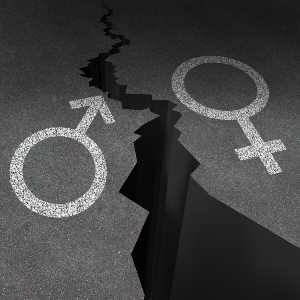
A note from the author: In the last iteration of this column, I noted that it would be the end of the ongoing feature. However, upon reflection, there is so much more to explore related to gender and other inequities in data and information systems. So, we’re back, but we might look a little different. I would like to incorporate interviews into future versions of this column. If you are someone of a marginalized identity in a data-related profession and feel you have something to say about the inequities in these systems, please reach out to me through the TDAN.com publisher.
The United States’ healthcare system has come a long way over the years. Across the course of my young lifetime, I’ve watched stem cell therapy go from a dream to a reality, seen a pandemic inspire a working vaccine in a matter of months, and noted that while the solution I drink before getting a CT scan or MRI doesn’t taste good, it certainly tastes better than it used to. With so many positive developments, it’s a wonder that a number of practices remain deeply rooted in the data measurements of less than one third of the country’s population.
It’s increasingly recognized that BMI (body mass index) is not an accurate or useful measure of health. According to a 2016 Vox article titled Why BMI is a flawed measure of body fat, “The main flaw [is]: It’s an indirect measure of body fat that doesn’t take into account important details about age, sex, bone structure, and fat distribution.” While one may assume that BMI is calculated with some kind of complex equation, it’s not. It is simply one’s weight divided by one’s height squared. This number then accounts for a wide variety of triggers within our medical system— suddenly, the computers generate a set of data for you. If you are calculated as being overweight or obese, the recommendations for your activity and treatment change. Your healthcare premiums might change. How then, would it make sense that some slim athletes are counted as overweight, while some people with a high percentage of body fat, but little muscle, can be counted as underweight?
Those who are assigned male at birth and those who are assigned female at birth tend to develop different body structures, but their BMI is calculated in exactly the same way. According to a Forbes Health article from this year, “BMI calculations and charts don’t adjust for your gender, age, race, ethnicity and other factors, which can impact your body fat and muscle— and therefore skew your BMI higher or lower.” For adults, valuations of BMI are the same for people of all genders. Once determined, this data is used to decide your risk level for diabetes, heart conditions, stroke, gallbladder disease, osteoarthritis, sleep apnea and respiratory problems, malnutrition, anemia, cancer, and more. This is a very large set of data used uncritically to make decisions about the healthcare people will receive.
Another example of a long-standing practice that generates very important gender-biased data in medical settings is the pain scale. Anyone who has been to an emergency room is familiar with the question— on a scale of one to ten, how badly are you feeling? Sometimes there may be faces displaying varying levels of comfort and stress to guide your decision. While there are many issues with this kind of self-reporting, the handling of numbers given by men and women has shown to vary greatly. According to a set of 2021 studies on behalf of the United States Association for the Study of Pain, even when people of different genders gave the same number to rank their pain, “perceivers prescribed more psychotherapy for female and more pain medicine for male patients,” and “female patients were perceived to be in less pain than male patients at the same level of pain expressiveness and pain self-report.” These reports show the presence of long-held beliefs that women’s pain is often psychosomatic and in their heads, dating back to ideas of hysteria and beyond.
When even our supposedly objective, numerical systems are causing harm along clear lines of gendered bias, it’s time to burn the whole system down. Or— at least take a good long and analytical look at how we can make it more equitable. The most immediate answer to achieving such equity might appear to be hiring more women and marginalized doctors and researchers. And we are on our way to this: according to the 2019 Washington Post article, The Big Number: Women now outnumber men in medical schools, that marked the first year that there were more women than men enrolled in American medical schools, with the increase in women enrolled almost doubling the increase in men enrolled between 2009 and 2019. While this change is happening in terms of base recruitment and education, further shifts within the industry have been slower to move the needle. According to a 2019 study, Examining Gender Disparity in Medicine and Setting a Course Forward, “[…] it was positive that the authors found that proportions of female speakers at these conferences increased from 24.6% in 2007 to 34.1% in 2017. On the other hand, although the proportion increased, women are still underrepresented overall, and without a substantial cohort of women, it is more difficult to weaken stereotypes about gender roles.” The same publication goes on to outline the standing pay gap between male and female physicians. These facts remind us that while we are headed in the right direction for rectifying gender data gaps, there is still work to be done.
